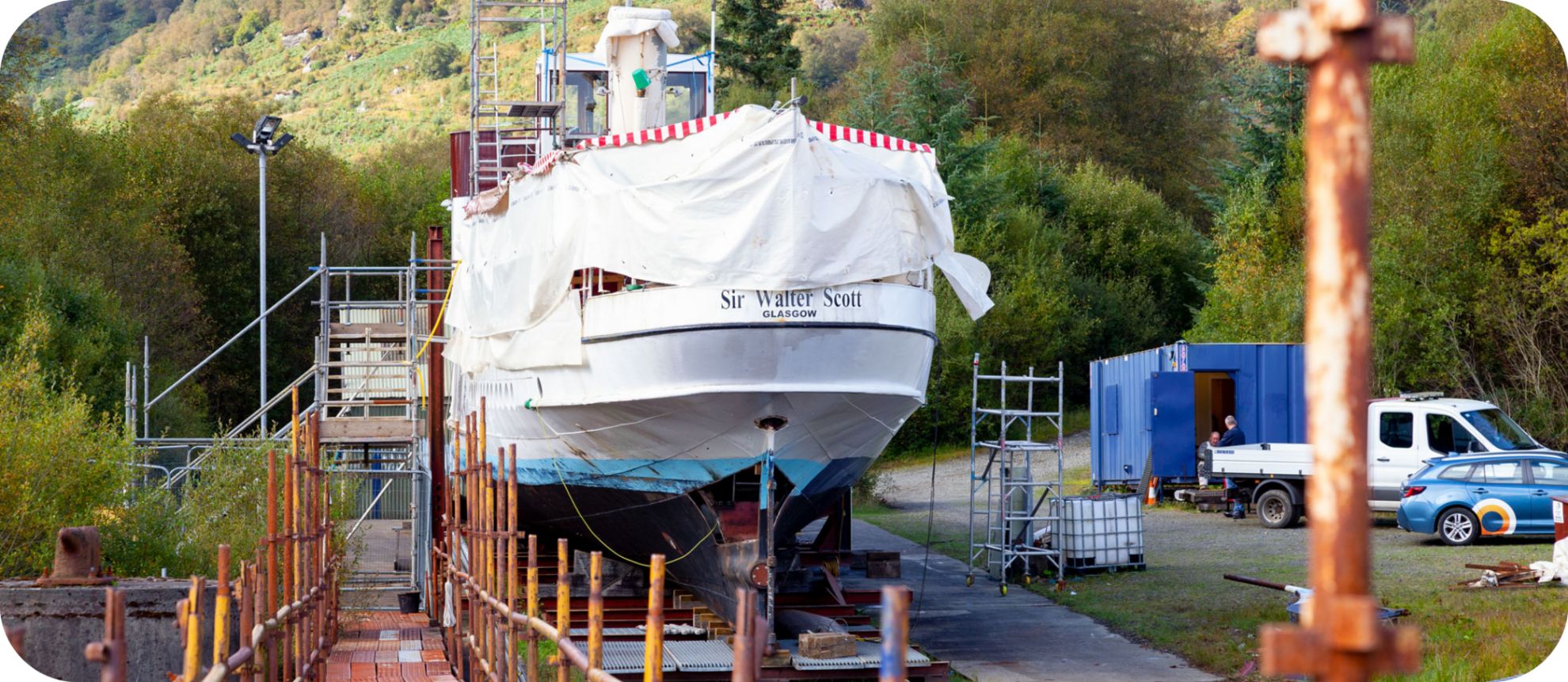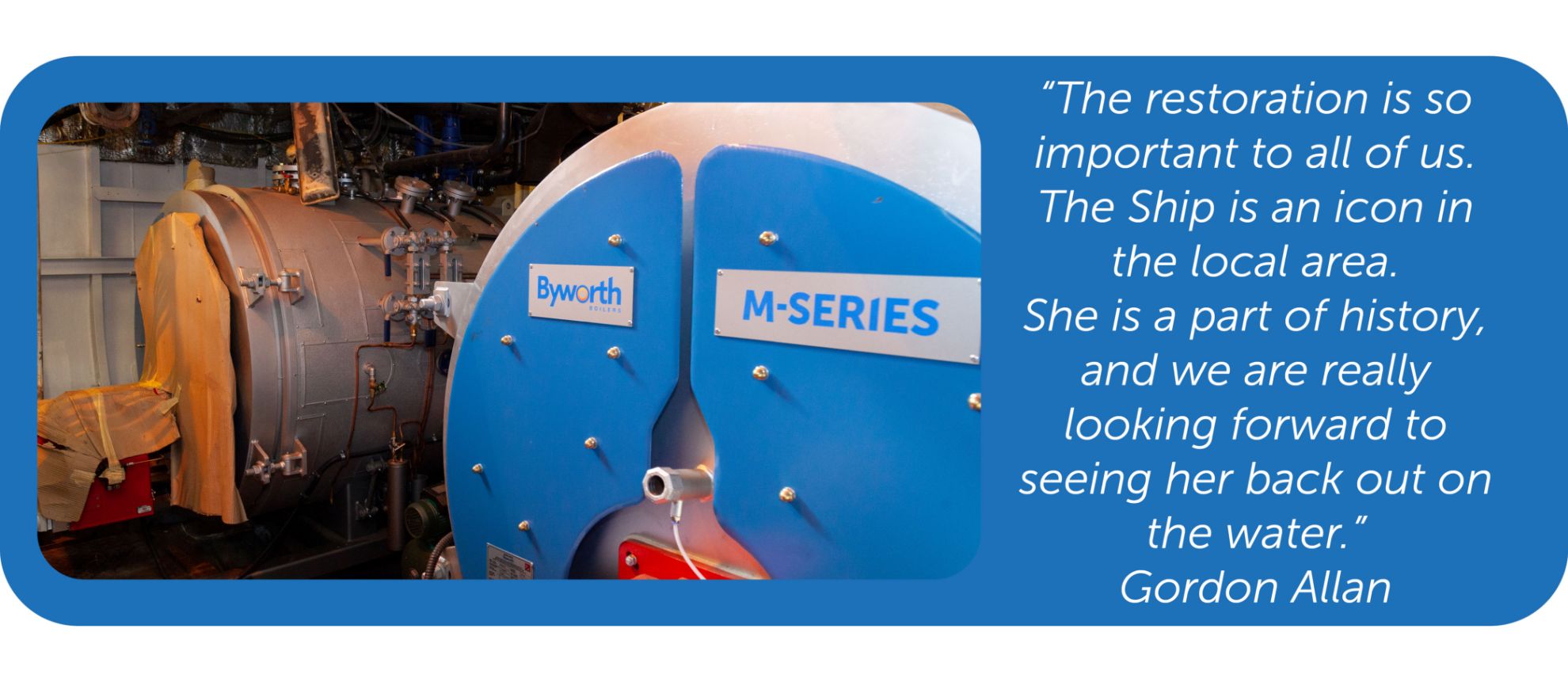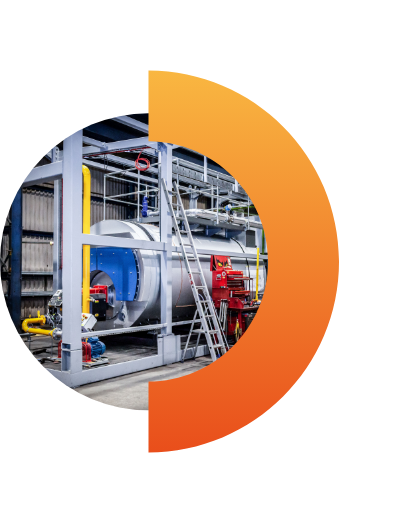
Steamship Sir Walter Scott restoration project
AT A GLANCE
-
Customer: Steamship Sir Walter Scott
-
Industry: Leisure and Tourism
-
Product: Two M-Series Steam Boilers
-
Goal: Bespoke Boiler Supply
The Steamship Sir Walter Scott is a historic steamship that operates on Loch Katrine in Scotland. Built in 1899 and named after the famous Scottish author, Sir Walter Scott, the ship was originally used for transporting passengers and cargo around the loch. Now, the steamship is a popular tourist attraction, offering scenic cruises around the loch and providing visitors with a unique experience of traveling on a historic vessel.
2020 was set to be a high-profile year for the Sir Walter Scott Steamship, marking the 120th year of sailing on Loch Katrine. Sadly, due to an issue with steam generation, she was unable to sail in her celebration year, and her long-term future became under serious threat. Fortunately, in 2021 the SOS (Save Our Steamship) appeal was launched and the restoration project began.
Byworth were thrilled to be involved in such an amazing project and now, in 2023, the boilers are fully commissioned and the ship has been moved from dry dock back out to the water. Here, the team will complete the final restoration work before she sails again later in the year.
We caught up with Gordon Allan of Steamship Sir Walter Scott Ltd to get his thoughts on the challenges, and the project's progress so far.
Can you explain the key issues that led to the Steamship restoration project?
The original boilers were replaced for coal fired boilers in 1960 and then in 2008 the decision was made to switch from coal to bio diesel.
Unfortunately these replacement boilers developed some significant issues, and the ship has been unable to sail until they are resolved
On a charity run project like this we understand that a competitive price is key in the decision making process, but were there any additional reasons Byworth stood out to you?
Cost and a competitive package and payment plan was of paramount importance for the project. We are a charitable organisation and must justify the costs and ensure that we have opted for the most cost-effective solution that fits the specific needs.
Byworth were able to offer a solution that fit the requirements and complemented the project goal. However, the visit to Byworth facility and meeting the team, including Rob (Baldwin) sealed the deal.
Seeing where the boilers would be made and chatting with the team that would be doing the work, was a great personal touch that gave us a real feel for the company.
How did you hear about Byworth Boilers?
The Chief Engineer that is working on the project had previously worked on a similar project where a boiler from the same supplier was replaced with a Byworth. He explained the service and product from Byworth had been exceptional, and highly recommended contacting Byworth for a price.
There were concerns that Byworth weren’t Lloyds Marine approved but this issue was resolved by the team early in the project.
How will the new boilers help with the reliability of the ship?
The boilers have been designed specifically to meet the demands of the steam ship. From the materials used in manufacturing down to the tie rods used to secure the boilers. What does the restoration project mean to you and the local area? The restoration is so important to all of us. The Ship is an icon in the local area. She is a part of history, and we are really looking forward to seeing her back out on the water.
How did you find the project process and level of service provided by Byworth?
The project hasn’t been without its problems, however the support from the team, especially Robert, has been great. He has gone above and beyond to help.
Were you kept updated regularly on the progress and any issues as and when they arose?
We’ve had great communication from the site with regards to progress, including frequent progress pictures. As previously mentioned, Robert has been very hands on throughout the project.
A few words from Byworth’s Design Engineer Jason on the technical aspects of the project.
For this project we needed to conform to Lloyd’s Register Rules & Regulations for the Classification of Ships for the design and manufacture of the steam boilers and systems. As a part of that process we had to be audited and become an approved manufacture of Class 1 Fusion Welded Pressure Vessels.
Doing so we are now an Lloyds Marine approved works, which means that we would be able to quote for future marine projects and pressure equipment relating to ships.
Part of the design specification was that the boilers had to be mounted to, but not connected to, two saddles, to allow for thermal expansion/vibration and movement/deflection of the ship’s hull. There had to be collision stops fore and aft to prevent excessive fore and aft movement of the boilers. We also had to ensure there are tie rods in 4 places to attach the boilers to the saddles. The tie rods were to secure the boilers to the ship, but allow for the inevitable expansion and movement.
“She is the last of her kind and she deserved to be saved! I came out of retirement to work on this project. This is pretty much a dream job. The Steamship is so important to all of us.” David Fountain - Maintenance Engineer


Interested in learning more about the range of products we offer?
Visit our products by type page for full specifications and details.
Not sure which boiler is right for you?
Call us on +44 (0)1535 665225 and we will advise you on the best product for your needs.

